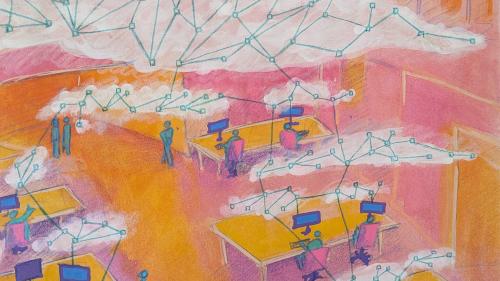Advances in mobile technology have created new opportunities for many around the world. India in particular has seen an explosion in mobile use with nearly 900 million mobile connections, making it the second largest market in terms of mobile connections and unique subscribers. The Indian mobile revolution has generated huge benefits for the country, however there are significant barriers to higher levels of mobile adoption.
There are many opportunities for India in the mobile space; namely in the agriculture, health, and finance industries. Approximately 70 percent of India’s population resides in rural areas and mobile technology provides a useful platform to connect these disparately located people to the Internet. India’s young population – 65 percent of the population is under the age of 35 –will likely continue to support growth in the use of mobile devices.
Barriers to Innovation in India:
- Infrastructure is a big challenge for India. The country relies on a third generation network and is currently in the process of transitioning to fourth generation technology. The lower capacity networks pose a challenge to successful e-commerce delivery.
- Access to startup capital is also an issue. Typically, Indian entrepreneurs raise funds from friends and family. Unfortunately, other sources of capital are scarce.
- Mobile network operators have a functioning monopoly since they built the mobile economy in India. There’s a great deal of bureaucracy and a lack of transparency, which it is difficult to navigate for consumers and businesses.
- Online security is a huge concern for Indian consumers who want to know that their information is confidential and private.
Smart Policies to Promote the M-Economy in India:
- Building an Indian mobile commerce platform could boost the Indian economy. Most transactions are made in cash, which adds a large cost to the supplier. This would help to promote commerce of all types and benefit the economy overall.
- Policymakers should incentivize people to put their savings into a bank, where they can earn interest. The savings rate in India is very high and this liquidity could help the country finance mobile infrastructure.
- Infrastructure improvements to support the transition to fourth generation mobile technology should be a priority. Infrastructure improvement would provide mobile network operators with the bandwidth to support mobile transactions.
In early December, the Center for Technology Innovation convened a Mobile Summit discussing Mobile Technology’s Impact on Emerging Economies and Global Opportunity. Globally, mobile adoption is a unifying force, but the localization of the mobile economy is incredibly important in India for long term and sustainable growth. Mobile can connect the demographics that have been marginalized and policy makers should prioritize the inclusion of those people who currently lack access to traditional financial services.
The Brookings Institution is committed to quality, independence, and impact.
We are supported by a diverse array of funders. In line with our values and policies, each Brookings publication represents the sole views of its author(s).




Commentary
India’s Mobile Economy
December 18, 2014